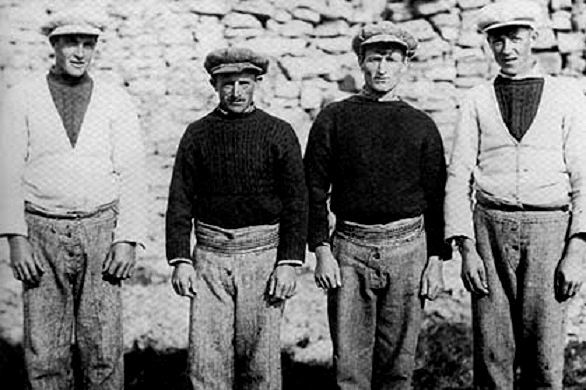
By Alva Mac Gowan
I was fortunate enough to have been raised by parents who had a huge appreciation for traditional Irish craft. Despite them both being from Dublin, we spent our summers exploring Ireland’s diverse and unique, rural heritage. You see, my father is an artist, and he would take us to the most picturesque locations in search of inspiration. That’s the Ireland that I fell in love with.
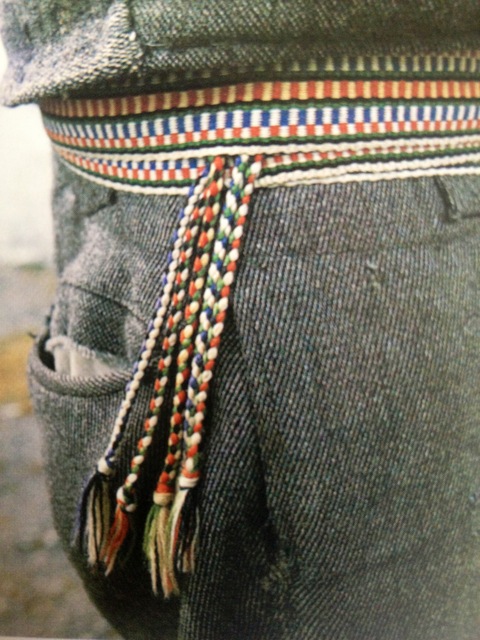
From a young age, my father has romanticised Ireland’s past traditions; he sang its ballads, and proud as a peacock, wore its tweed jackets and Aran sweaters. He even sported a beard and to complete the look, smoked a pipe. After school I would spend my afternoons in his studio. I learned the guitar next door; in a harp maker’s workshop, filled with the strong woody aroma of sawdust and freshly carved timbers. Now, I faintly recall my father’s guitar had an usual strap, it was woven from brightly coloured sheep’s yarn.
The warp faced weaving had similarities to bands woven in other parts of the world; like an alpaca sash belt I found recently in Peru, but my father’s strap had its own flair. It has long since frayed and disappeared, and when I recently asked him about it he told me he picked it up in a craft shop in Maam Cross, Connemara in the 1960s.
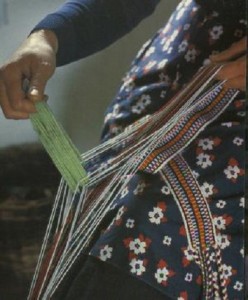
This just made me even more curious. You see, I am in love with traditional textiles; the more colourful and ethnic, the better. I was also delighted to learn that Ireland, which I had wrongly associated with neutral pigments like beige, cream, black and grey, had a colourful past; just as vivid as Latin America’s. The woven guitar strap my father owned originally started life as a woollen belt or sash called a crios.
According to David Shaw-Smith, one of the pioneers of Irish folk craft research, ‘The crios were worn with a waistcoat or bástchóta, and home-spun tweed trousers.’ The weaving itself, was done with dexterous fingers, without the aid of a loom or mechanical device. The warp thread was stretched between two chairs or stools, or more traditionally, between one hand and one foot, tying the ends to the shoe. So, realistically these cords could have been made anywhere.
During penal times in Ireland (the 17th & 18th Centuries), it was not only the catholic religion and Irish language that was prohibited, Irish costumes and hair styles were also banned. This is probably the reason why most Irish folk costume only survived in remote parts like the Aran Islands. As a drowned fisherman could be recognized by his community from the cable weave of his Aran jumper, the choice of colours in a crios could be attributed to one weaver. Women would carefully hand down the secrets of their dyes to their daughters or take their recipes to the grave. The Irish crios typically contained 6 colours with a natural white background on each outside selvage. The women and men wore them around their waist; for a belt to fit it needed to be ‘as long as your outstretched arms’. The ends were furnished with three braids.
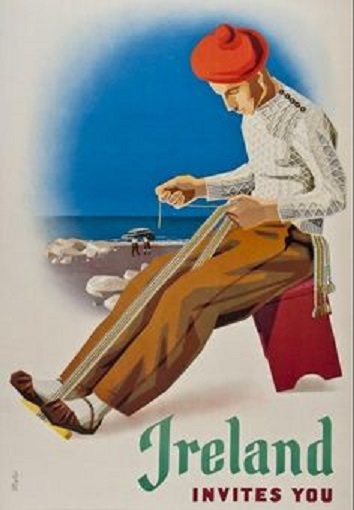
In the 1960s, along with many of other traditional Irish crafts, crios cord weaving enjoyed somewhat of a resurgence which had much to do with the Clancy Brothers influence on the other side of the Atlantic, and thus traditional Irish fashion was reborn. At one point crios cords were actually sold in Woolworths, and they also became part of a girls’ school uniforms in Sligo and Meath.
Luckily, today there are still a small handful of weavers who have continued this ancient colourful tradition. I recently enjoyed a enlightening conversation (which supplied me with muchof the information for this piece), with crios weaver Niamh Trua who is now based in north Leitrim, on the north west coast of Ireland. Like many crafts Niamh admitted that crios weaving is easy to learn but takes months to master. She is truly passionate about her craft and produces most of her cords for another ancient use, one that was almost forgotten: handfasting.
Handfasting or the “Tying of Hands” is a tradition that exists amongst many of the world’s cultures including Jewish, Ukrainian and some African Tribes. Archetypal phrases such as “tying the knot” or “wedding bands” may well indeed be derived from such a tradition. The crios cords are sometimes used during marriage ceremonies; when partners hands are bound together as a symbol of their commitment to each other. As many Irish weddings are moving further away from the traditional church celebrations, handfasting is a beautiful way of continuing an ancient Celtic Pagan ritual. Ironically in the US, this ancient folk custom is more popular in Church weddings.
Personally, I cannot wait to wear my crios with a pair of skinny jeans or an oversized cardigan, where I can proudly wear my heritage on my waist!
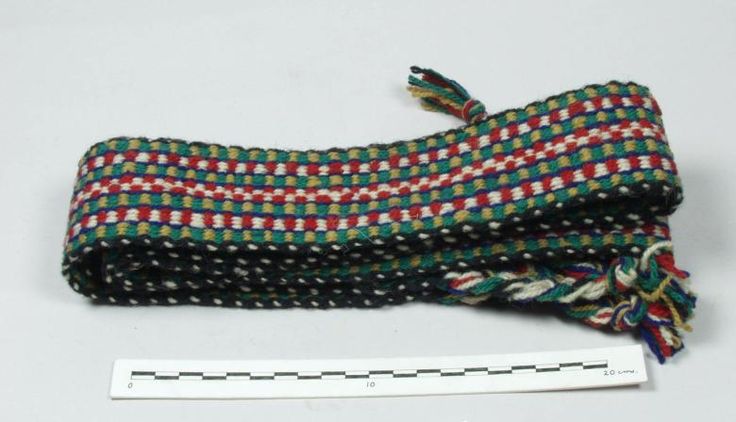
A huge thank you to the very talented Niamh Trua for her collected knowledge and for keeping this wonderful tradition alive. If you’d like to see more of Niamh’s work check out her website.
by Alva Mac Gowan
Related Posts

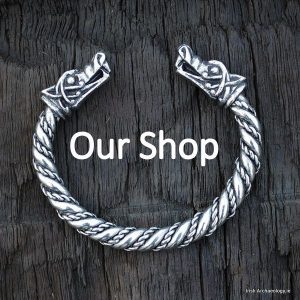
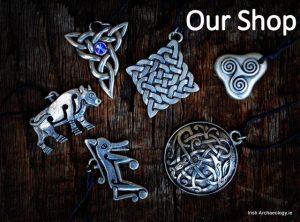
Very nice! Similar to the ceinture fleche that the Voyageurs and courier de bois wore here in Canada.
I recognize the pattern! So similar to the small old Nordic Inkle Looms. We have made many a belt and guitar strap.
My knit wear and patterns usually take between thirty and seventy
However
On the looks of old there were often children weaving too
Wonderful information!;
Not a difficult technique, but I wasn’t aware of it being used among early Irish. How are the ends finished? Just the few inches of flat braid?
It seems to me they might be using a backstrap loom, with either a string or rigid heddle. (Be a little hard to keep the warp threads under tension with JUST the hands.) It’s also an inkle loom technique, it seems.
Wonderful article! I’m 35/m and wear my traditional Crios at least 3 times a week. Mine was made for me from the good people at Irish Arms about 15 years ago. i use it for so many things from Bushcraft, camping, daily wear to even Iron Age Reenactment. My wife is currently learning how to make them for our three sons.
I live in NZ and have found a beautiful hand woven Crios! So pleased to hear of its wonderful history.
As a textile artist I would love any recommendations on how to weave in this style if anyone can please help me with book details or a blog, would be so appreciated. X
Hi Phoebe,
I usually use an Inkle loom to weave a crios. It is a pleasant way to do it.
It is, as you know, also possible to weave a crios with your hands manipulating the warp threads without a loom.
The lovely and very informative book “Ireland’s Traditional Crafts” by David Shaw-Smith, 1984 Thames and Hudson Ltd. London, has good photos and explanations about crios weaving.
Enjoy it!